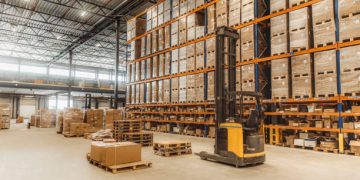India’s largest shoemaker, Farida Group, had been preparing to expand with a 150-acre export facility in southern Tamil Nadu. Those plans are now on hold after the United States announced a proposal to raise tariffs on Indian exports from 25% to 50%.
For Farida, which supplies brands such as Cole Haan and Clarks and derives about 60% of its revenue from the US, the change has had an immediate impact. New orders have slowed significantly, and the company’s planned 10 billion rupee ($114 million) expansion has been frozen.
“With 25% tariffs, you can still adjust pricing and negotiate with buyers,” said Rafeeque Ahmed, Farida’s chairman. “At 50%, the numbers don’t work.”
The higher tariff rate, which would be the highest among Asian economies trading with the US, poses a challenge to India’s manufacturing ambitions. The government’s “Make in India” initiative aims to grow manufacturing to 25% of GDP, but according to World Bank data, the sector accounted for just 13% last year, down from 16% in 2015.
In recent years, India has made strides in attracting investment, particularly in electronics assembly, pharmaceuticals, and green technology. The US is now India’s largest export market and a leading source of foreign investment. However, the proposed tariff increase would affect much of India’s $87 billion in annual exports to the US, with exemptions currently in place for smartphones and pharmaceuticals.
Industry representatives warn that such a shift could alter supply chain strategies. “Forget China Plus One right now. Companies are thinking India Plus One,” Ahmed said, noting that some firms are considering diversifying away from India.
Analysts suggest the potential economic impact could be significant. Bloomberg Economics estimates that if the 50% tariff remains, US-bound exports from India could fall by 60%, putting close to 1% of GDP at risk. Without exemptions for key sectors, the decline could reach 80%.
On the ground, exporters are already feeling the strain. Ajay Sahai, CEO of the Federation of Indian Export Organisations, said demand could fall by 20% in the short term. Many companies are reducing prices to retain customers. “The only way to hold on to buyers is by giving large discounts,” said Sudhir Sekhri, managing director of apparel maker Trend Setters Group, which earns 65% of its revenue from spring and summer orders.
Some manufacturers are reassessing costs and production schedules. Sharad Kumar Saraf, managing director of Technocraft Group, which exports scaffolding, textiles, and other products, said additional tariffs “will impact our trade severely,” as roughly a third of the company’s sales are US-bound.
Trade discussions between the two countries are ongoing, and there is hope that a bilateral agreement could ease tariff pressures in the coming months. However, exporters say that prolonged uncertainty could accelerate shifts in global supply chains, reducing India’s share in competitive product categories.
For companies like Farida Group, the stakes are high. The firm employs about 23,000 people, with more than half producing for the US market. “Every paused shipment or canceled order brings difficult decisions,” Ahmed said. “Workers would be among the hardest hit.”
#GlobalTrade #TariffsAndDuties #IndiaManufacturing #SupplyChainNews #ExportChallenges

















